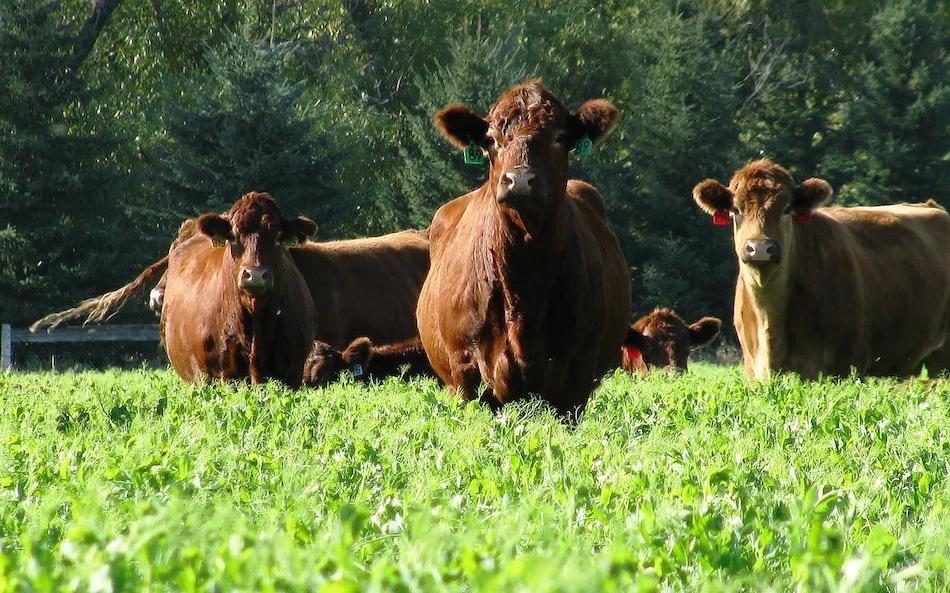Planting annual cover crops in between cash cropping systems can be a great way to produce extra forage and extend the grazing season. Cover crop grazing can provide benefits to your operation including saving time, money and improving soil health.
Cost-Savings
One of the biggest expenses for any cattle farmer is feed costs. By keeping cattle out grazing, it provides significant cost-savings by reducing the need for harvested feed. By growing a cover crop on corn and soybean acres, not only do the harvested feed costs decrease, but the cost of labor to make and feed the harvested forages also decreases as the cows do the work. By raising a cover crop with livestock in mind, grazing time and overall forage production can be extended beyond what a typical perennial pasture can provide. This can usually mean an additional 3-4 weeks, or even more in the fall or spring when pastures are dormant.
Time Savings
The time savings can go beyond just feeding. Cattle naturally apply manure in the same place they graze. This saves time by removing the need to haul manure from a barn or a lot to the field. When cattle are out to graze, that means less labor time to clean the manure out of the barns. Rotational or mob grazing helps spread out the manure more evenly and adds even more benefit.
Soil Health Benefits
Looking for a way to try out some cover crops on your farm? Grazing is a good place to start. Not only do the roots from cover crops drive increased organic matter in the soil, but the manure from the cattle provides an important soil health benefit and improves nutrient cycling. It is generally best to start off with a cover crop behind corn ahead of the next years soybean crop. This takes advantage of the corn stalks as a feed source as well, and soybeans can be more resilient to any compaction issues or later planting that may result from grazing.
While these are tangible benefits of grazing, there are important factors to consider before implementing these practices on your farm. Logistical concerns are very real, so it is essential to plan ahead. The cattle need water, a fence around the land, handling facilities, and a shelter for inclement weather. Cattle should not be grazed on extremely wet ground as it can have negative consequences on the soil structure and cause compaction and other issues for the following cash crop. It is also important to check your herbicide and other pesticide products to make sure they allow for your grazing plan. Plan ahead, and talk to others that have grazed cover crops to work out a plan to make grazing cover crops successful on your farm.





Post a comment
Report Abusive Comment